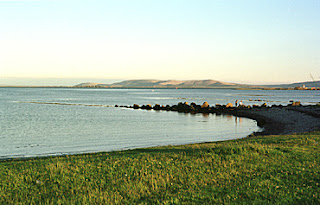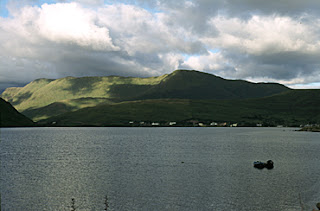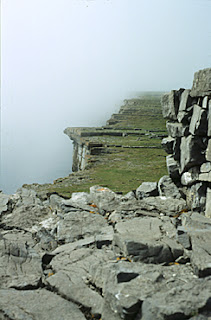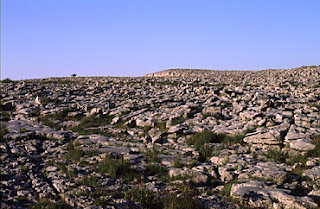![]() EN
EN
I went to Ireland one time in July of 2000. I visited a friend in Dublin, and then went to Galway, and then toured the west coast. Ireland truly has some amazing places and things to see!
Galway
Galway is in central western Ireland, and is one of the best-known towns in the entire country. It has a beautiful old town and market area, and several interesting churches and museums. One of the nicest towns in Ireland.
This opening photo of Galway above sums up the town well. This is the Old Town or town center, taken from the Claddagh Quay, a residential area by the water which used to be a fishermen’s neighborhood. The famous claddagh rings originated here.
This is an early evening view out on Galway Bay, a view about which famous poems have been written. Beyond lay the mountains of Connemara.
Connemara
Connemara is a wild, bleak, desolate region. Is is all mountains of hard rock, bog and swamp, and lakes and ocean. It is devoid of trees and generally empty. It is often said that it is a wonder that farmers had ever managed to grow anything here. Now it is a great place to take nature hikes and leisurely drives, and to get away from tourist crowds. Gaelic, the traditional language of Ireland, is still spoken here by the local population.
Here is a view of Diamond Hill, one of the most popular sights in Connemara National Park. It is much higher than it looks. You can follow a path to get there, but the path fades away after a while, and you have to wander through the bog. When you do this hike, you turn around and look out from each direction, and you get a great variety of views, as you will soon notice.
Here is a view of the valley from Diamond Hill. You can see an occasional house
if you look carefully.
Another view from Diamond Hill, this time from another side. This day was unusually
clear for Connemara!
This last shot on the way out of Connemara shows the typical lake and mountain, and on the right is a curragh, a traditional Irish fishing boat.
Inishmore
Inishmore is the largest of the Aran Islands, which lie in the middle of Galway Bay. It takes a boat ride from Connemara to reach them, and to this day they are pretty isolated. A whole day can be spent cycling around Inishmore. Inishmore is the best known, because of its prehistoric rock formation Dún Aonghasa. The population on all three islands are also still Gaelic-speaking.
Dún Aonghasa is an ancient fortification of rocks, which stands on the highest point of Inishmore. It is believed that they were built by the Fír Bolg tribe, an early Celtic or pre-Celtic tribe that inhabited the Aran Islands. It is a good example of an early fortress. As the above photo suggests, these people could command the whole island from here, both because of the protective rocks themselves and because of their high view of the whole island. This fort is about 4000 years old, give or take – the same age as the pyramids of Egypt!
Here is the rear edge of Dún Aonghasa – a sheer cliff drop straight into the Atlantic Ocean.
The Cliffs of Moher
Also on the west coast of Ireland, but further south of Galway, Connemara, and the Aran Islands, is County Clare. County Clare is fairly unremarkable, and I did not care for its capital, Ennis, at all. However, this is where the Cliffs of Moher are found, which is one of the most fantastic sights in all Ireland. This photo was taken at the cliffs at sunset, and pretty much speaks for itself. This is one of Ireland’s best-known sights.
The Burren
The Burren is the other fascinating natural feature of County Clare. This is a rock
desert of sorts, which is a mountainous plateau. This place is devoid of much life, and not
many plants or crops can grow here. When Oliver Cromwell invaded Ireland, one of his
men went through The Burren during his travels. This soldier is believed to have said,
“There is not enough water to drown a man, not enough wood to hang him, and not enough soil to bury his corpse!”.
When I mentioned this story to my Irish friend, she said, “Well it sounds like a safe enough place, doesn’t it? Nothing bad can happen to you there!”
This is a typical scene from The Burren. Notice how rocky and empty it all is!
Here you can see how The Burren consists of rocky hills as well as valleys.
This is the Poulnabrone Dolmen in The Burren, probably the most famous structure of its
kind in Ireland. Dolmens are prehistoric burial mounds made of rock slabs, and are found
all over Ireland.













